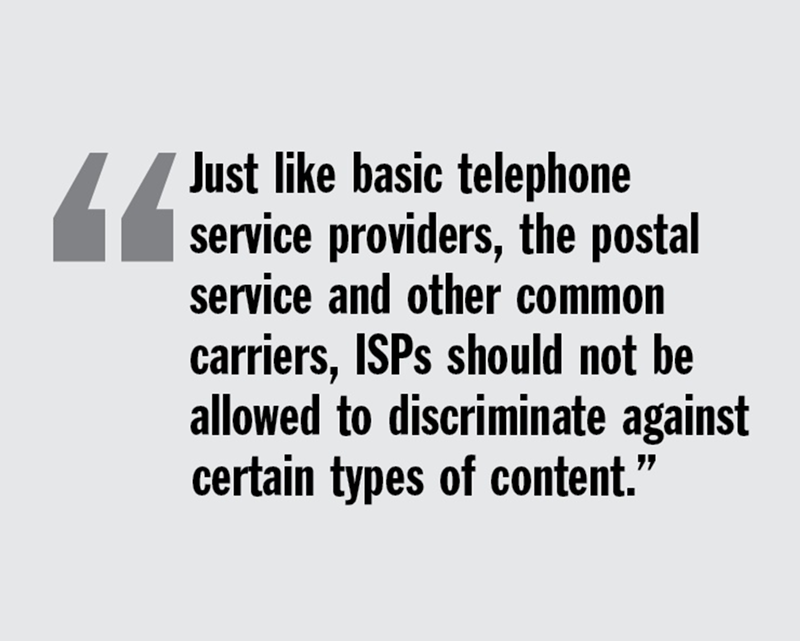After Roberts Broadcasting, a black-owned media company, announced the sale of its few television stations last December, African Americans will own the same number of full-power U.S. broadcast television stations in 2014 as they did in 1974: none.
How is it that minority ownership has been set back 40 years? To answer the question we will have to first look at successful regulatory efforts to stimulate diversity of broadcast ownership in the past, what changed and why.
In 1978, the Federal Communications Commission (FCC) issued a policy to support the sale of broadcast properties to minorities by offering a deferral on capital gains taxes to owners when they sold their radio and television stations to minorities. The policy was amended in 1982 to also award tax certificates to investors if they provided startup capital to minorities buying broadcast stations.
It is probably worth emphasizing here that the FCC’s policy did not give minorities preferential treatment through tax deferrals — that benefit was for non-minorities who sold their broadcast properties; the policy merely enhanced opportunities for minorities by providing an incentive to non-minorities and big corporations. There were no quotas, no fixed number of broadcast licenses nor fixed percentage of licenses that had to be provided to minorities under the policy.
In its policy statement, the FCC made clear that minority ownership made for a more diverse selection of programing over an important public resource — the broadcast spectrum.
To say the least, the FCC’s tax certificates made a demonstrable impact on minority broadcast ownership. Prior to the policy, minorities owned just 40 of 8,500 U.S. radio and televisions, and during the existence of the policy minorities acquired 288 radio stations and 43 television stations.
So what changed? Neoliberal economic thinking in Washington and the Telecommunications Act of 1996 changed broadcast ownership diversity for the worse.
Essentially, neoliberal economic philosophy in media policy is the idea that the broadcast industry should be treated less like a regulated public trust and more like any other commercial enterprise and freed from government constraint. In that regard, the FCC’s tax certificate policy was seen as a preferential treatment of minorities, and a media marketplace unfettered by any ownership rules would be better.
The FCC’s tax certificates became the target of such criticism in Congress during the 1990s as legislators presented several rationales to end the policy, including a plan by Viacom to defer $400 million in federal taxes by selling some of its properties to a minority-led group under the program. However, it was the characterization of the FCC’s tax certificates as another unfair government preference for minorities and the need to offset the cost of instituting a popular health-care tax deduction for farmers and self-employed individuals that turned out to be the most notable justification to end the program. In fact, congressional repeal of the FCC’s tax certificate program was part of the Deduction for Health Insurance Costs of Self-Employed Individuals Act of 1995.
Passage of the Telecommunications Act a year later did even more to diminish the number of minority-owned broadcast stations by significantly relaxing media ownership limits and ushering in an unprecedented wave of media consolidation. The act eliminated the previous cap on the number of radio stations a single entity could own at the national level and allowed one company to own as many as eight stations in metropolitan markets.
After the Telecommunications Act, 26 black-owned radio stations (eight AM and 18 FM) were sold to white-owned companies as new corporate powerhouse Clear Channel bought 17 of those alone.
The 1996 law also eliminated the restriction on the number of television stations that a single entity could own at the national level and increased their national reach through owned-and-operated stations. The old one-to-a-market television station ownership rule was also dropped so the FCC could allow one company to own more than one station in a designated market.
As a result, 40 percent of minority-owned television stations were sold to non-minority entities between 1998 and 2007. And now, in January 2014, the last of those minority owned television stations has been sold to non-minorities.
Why did repeal of the tax certificate policy and the Telecommunications Act have such a devastating impact on minority broadcast ownership? Robert Short, Jr., a black man who once owned a successful station in the Syracuse market, described his own case before Congress in 2003 when the devastating impact of industry consolidation on minority broadcast was already evident. With the diminution of media ownership rules, Short explained that Clear Channel stations were able to attain a 50-percent market share in Syracuse, and Citadel (another conglomerate) was able to claim 25-percent. By owning several stations in a single market, Clear Channel was able to combine the ratings from each of its stations and then show advertisers how many more listeners they attracted than independently owned-and-operated stations in the same market, such as Short’s.
Moreover, Clear Channel owned Katz, a major national representation firm that brought in national advertising, and Katz would not represent Short’s station because of a non-compete agreement with Clear Channel.
Thus, many minority-owed broadcast stations were suddenly — and unfairly — subjected to lower advertising valuations as there were strong incentives (including ad cost) for marketers to make their media buys with larger conglomerate entities, rather than minority-owned broadcast outlets that lack connection to such economies of scale.
So what should be done about the diminution of minority broadcast ownership? Promoting a new race-conscious media policy would be politically precarious in Congress and the courts these days. However, race-neutral policies that focus on correcting market failures as a result of media ownership concentration might offer a more direct route for change.
The principle of broadcast ownership diversity is more than just a political issue or policy problem; it is a struggle for the idea that the broadcast audience has a right to receive a diversity of expression over its airwaves from a diversity of broadcast owners and a recognition that unbridled market forces do not necessarily provide this. It is a fight to counter consolidated corporate control over an important mass medium.
Above all else, minority broadcast ownership doesn’t just serve minority interests; it serves the public interest by enhancing the diversity of the broadcast spectrum, and all members of the broadcast audience are beneficiaries.
The fact that zero U.S. broadcast television stations today are black-owned is a poor reflection of diversity in 2014.
Dr. Jeffrey Layne Blevins is Head of the Journalism Department and Associate Professor at the University of Cincinnati, where he teaches media law and ethics. In 2009, he served as a federal grant reviewer for the Broadband Technology Opportunity Program administered by the National Telecommunication and Information Administration and the U.S. Department of Commerce.






